Mallard × Canada Goose
Anas platyrhynchos × Branta canadensis
EUGENE M. MCCARTHY, PHD GENETICS, ΦΒΚ
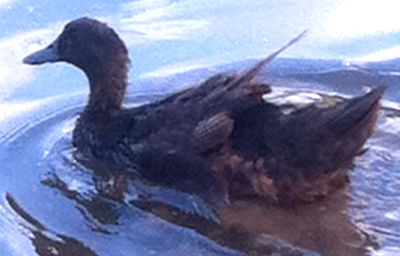
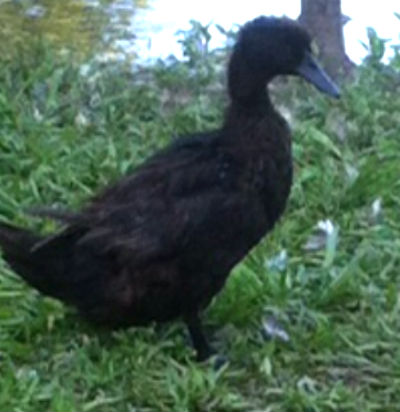
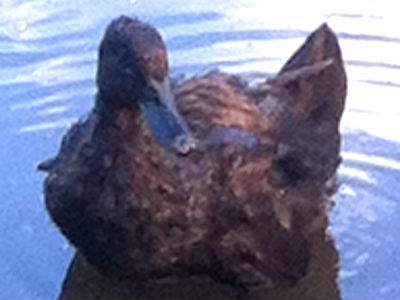
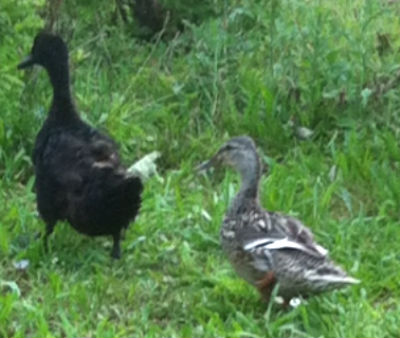
All images on this page are of probable mallard/Canada goose hybrids (Anas platyrhynchos × Branta canadensis) or of mallards and Canada geese in their company. Other then the video below, all were photographed in Branch Brook Park, Newark, New Jersey on July 21, 2016 (specifically between Bloomfield Ave. and Park Ave.). The photos were taken by local resident Josephine Ireri and communicated by her husband Eric Martindale. They are used here with permission. Thanks!
Note that the Newark bird looks substantially different from the probable hybrid in the video, taken in Athens, Georgia. Such variation occurs in hybrids both among F1 hybrids (in distant crosses) and in later-generation hybrids. The results of reciprocal crosses can also look substantially different. And of course, with plumage changes it is possible for the same hybrid to look different in different seasons, just as with non-hybrid birds. And males and females produced by the same cross can often look quite different. Some hybrids can even appear to change sex (in terms of their plumage) with changes in the maturity of the gonads (this is called sex reversal).
Eric made the following comments about the Newark bird:
- The vocalizations of this bird were distinct from that of either parent.
- The neck is clearly longer than in a duck, and this can best be seen in the picture below of all the birds swimming together.
- The bill and feet are black.
- “The other birds don’t like this one. Both species ostracize it and peck at it. They don’t want it to eat when food is thrown.”
- The feathers stick out in an awkward way from the back.
The parental birds in this cross come into potential breeding contact in both North America and Europe. Hybrids of this type were formally reported by ornithologist C. L. Sibley (1938, p. 329), who says that he confines himself to records of hybrids “about whose authenticity there can be no doubt.”
This is an intersubfamilial cross (Anatinae × Anserinae).
By the same author: Handbook of Avian Hybrids of the World, Oxford University Press (2006).
Work cited: Sibley, C. L. 1938. Hybrids of and with North American Anatidae. IXe Congrès Ornithologique international (Rouen), pp. 327-335.
More pictures:
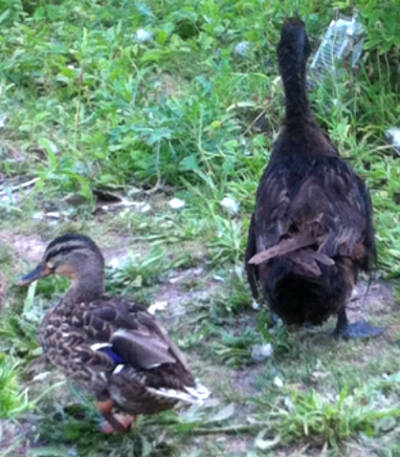
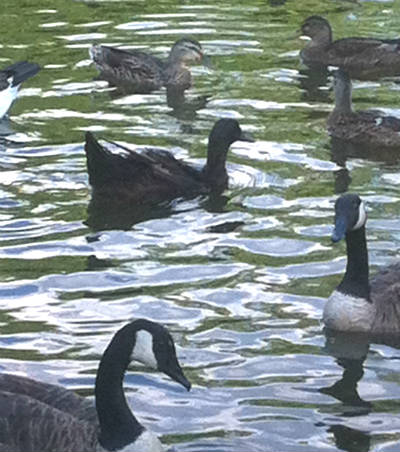
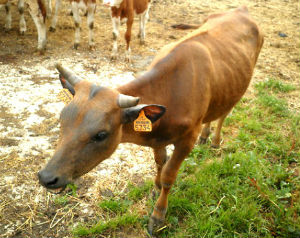 Deer-cow hybrids >>
Deer-cow hybrids >>